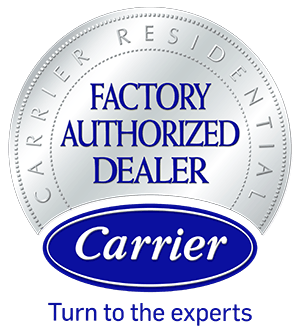Updated: October 2023
Some homeowners might underestimate the importance of their heating and cooling systems. It should be reiterated that they keep you comfortable throughout every season and ensure that your home stays energy efficient. Unfortunately, some homeowners tend to disregard their HVAC systems–and even their heat pumps–until things start to go awry. They’ll only call for an HVAC replacement or AC maintenance at that point. Fortunately, if you have a functioning system, you don’t have to worry.
It’s also worth noting that your HVAC system can feature a heat pump as one of its fundamental components. Heat pumps have a defrost mode to help get rid of frost that forms on the outdoor coil.
In this post, the leading heating and AC repair expert in your area, Cool Zone Air Conditioning & Heating, shares an in-depth guide to your heat pump’s defrost cycle.
A Basic Rundown of Heat Pumps
Before being able to understand your heat pump’s defrost cycle, it’s important to know what heat pumps are in the first place. Here are a few details that you should know about heat pumps:
Heat pumps can provide both warmth and cool air
Despite what the name implies, a heat pump can function both as a heater and an air conditioner. Your AC maintenance expert will tell you that when it stays in heating mode, it siphons energy from the outdoors using electricity. It utilizes the heat present in the air and drives warm air into your house. Other heat pumps function by drawing heat from the ground, akin to that of geothermal energy, rather than drawing it from the air.
Heat pumps can also act as air conditioning units. Heat pumps have a cooling function which draws cool air from the air or the ground and funnels it into your house. Essentially, you can streamline your heating and cooling solutions at home and eliminate your furnace and air conditioner by replacing them with a single heat pump system.
What Is Heat Pump Defrost Mode?
When your heat pump is turned to the heating cycle, the thermal energy is drawn from the cooler outdoor air. Given the right conditions with certain temperatures and humidity levels, your AC replacement expert will tell you that frost can form on the outdoor coil and accumulate rapidly.
To prevent frost from building up further, your heat pump will activate its defrost cycle to eliminate frost from the outdoor coil. When the heat pump activates defrost mode, it reverses its operation temporarily and goes through a “cooling cycle”. This will force the warm air through the outdoor coil to warm it temporarily and melt away the frost. It will continue to run its course until the outdoor coil reaches 57 degrees.
Why Does It Have a Defrost Cycle?
A heat pump functions by using the heat exchange properties of the refrigerant and heat from outside and moving it to another space. During the cold winter months, this means that it draws in heat from the outdoor air and transfers it into your house. It performs the opposite function during the summer to ensure efficient cooling.
As heat energy is eliminated from a certain area, the temperature in that spot will drop. If the heat pump’s outdoor coil has accumulated enough moisture and frost, removing the heat can cause frost formation on the coils. The frost will make it difficult to extract heat from the air. In turn, it needs to melt off the frost to allow the heat pump to operate normally.
How Can I Tell If It’s Functioning Properly?
Here are a few signs that you should pay attention to so you can tell if your heat pump is working properly:
If the outdoor temperature has dropped significantly, you should expect your heat pump’s defrost cycle to begin.
You should feel warm air blowing into your house during the defrost process. Also, keep an ear out for a humming sound coming from your unit.
Your AC replacement expert will tell you that the defrost cycle will normally last around 10 minutes, and it shouldn’t defrost more often than every 30 minutes.
When Will Heat Pump Issues Most Likely Occur?
During heavy snow due to frost and snow buildup. When there are perfect conditions for moisture to freeze on contact when it forms on your outdoor coil.The outdoor fan motor draws in cold air from the outdoor coil and traps snow within it.Your unit has finished a defrost cycle, but there’s more snow present that warrants another defrost cycle.
If your heat pump is defrosting too quickly or not delivering sufficient heat, this could be due to operator error. Try to check your user manual for some troubleshooting guidelines. If you’ve eliminated the possibility of user error, your contractor might be at fault for an improperly sized heat pump. Make sure that you contact your installer to replace the unit with a correctly sized one. Having a skilled professional assist, you with the matter will ensure proper sizing and installation.
How to Prevent Heat Pump Issues from Occurring
The average service life of a heat pump provided by Cool Zone Air Conditioning & Heating is anywhere from 10 to 12 years. To maximize your heat pump’s efficiency and longevity, make sure to invest in a preventative maintenance plan. There are tons of benefits to having your heat pump system checked annually. This allows cleaner air to flow through your house and also allows you to save thousands of dollars on early heat pump replacement. This allows you to spot minor issues before they can grow into serious ones. After all, you wouldn’t want to have an emergency when you need your heat pump the most, since you want your home to stay as comfortable as possible. With the proper care and usage, you can even expect it to last a decade or more!
If you need an AC repair to prepare your system for the upcoming season, call on Cool Zone Air Conditioning & Heating! We’re committed to providing homes and businesses with top-notch residential and commercial HVAC services. Call us at (623) 322-0933 or request an appointment online to get in touch with us.


